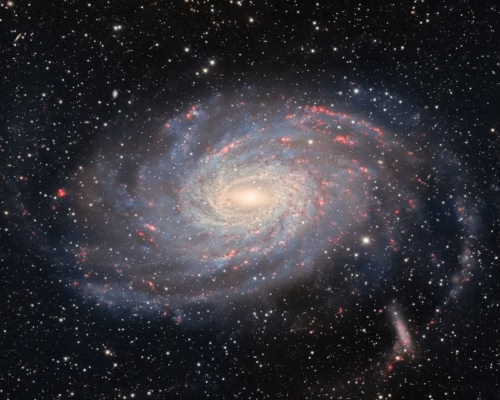For as long as humans have looked up at the night sky, one question has echoed through time: Are we alone in the universe? With billions of stars in our galaxy — and likely billions of galaxies beyond — it seems almost impossible to believe Earth is the only world teeming with life. Yet, despite decades of exploration and billions of dollars in research, we still haven’t found conclusive proof of life beyond our planet.
But science is closer than ever before. With new telescopes, advanced technology, and bold missions to distant worlds, the search for alien life is no longer just science fiction — it’s one of the greatest quests in human history.
The Scale of the Universe: Why Life Seems Possible
To understand why scientists believe alien life might exist, consider the sheer immensity of the universe. The Milky Way alone has over 100 billion stars, and most of those stars have planets orbiting them. NASA’s Kepler Space Telescope discovered thousands of exoplanets — planets beyond our solar system — many located in what’s called the “habitable zone”, where conditions might allow liquid water to exist.
If even a tiny fraction of those planets have environments similar to Earth, there could be millions of potential life-supporting worlds in our galaxy alone. Multiply that by the billions of galaxies in the observable universe, and the odds suddenly seem overwhelmingly in favor of life existing somewhere out there.
But finding it — and proving it — is the real challenge.
What Are Scientists Looking For?
When astronomers search for life, they aren’t necessarily looking for little green men or flying saucers. They’re searching for biosignatures — chemical, atmospheric, or physical signs that indicate life might exist or once did.
These signs include:
- Water: Every known form of life needs it. Finding water — especially liquid water — is one of the most promising clues.
- Atmospheric Gases: Gases such as oxygen, methane, or carbon dioxide, present in specific ratios, can indicate biological processes.
- Organic Molecules: Complex carbon-based molecules are the building blocks of life as we know it.
- Temperature and Light: Planets within the “Goldilocks Zone” — not too hot, not too cold — are prime candidates for life.
This approach is why so many space missions target planets and moons that show evidence of these ingredients.
The Most Promising Places to Look
- Mars – Our Mysterious Neighbor
Mars has always fascinated scientists and dreamers alike. While it’s barren today, rovers like Perseverance and Curiosity have discovered evidence that liquid water once flowed on its surface — rivers, lakes, and even possible oceans. Scientists have also detected methane in Mars’s atmosphere, which on Earth is often produced by microbes.
No Martian life has been found yet, but researchers suspect that microbial life might exist underground, protected from radiation and extreme temperatures. If so, Mars could hold the first proof that we’re not alone — even if it’s microscopic.
- Europa – The Ocean Beneath the Ice
Europa, one of Jupiter’s moons, may be one of the most promising candidates for alien life. Beneath its icy crust lies a massive ocean of liquid water, possibly more than twice the volume of all Earth’s oceans combined. Scientists believe hydrothermal vents on the seafloor might provide heat and nutrients, just like the ones that sustain life deep in Earth’s oceans.
NASA’s upcoming Europa Clipper mission will explore this world in greater detail, searching for chemical signs of life in its icy surface and atmosphere.
- Enceladus – The Moon That Sprays Water
Saturn’s moon Enceladus is another icy world hiding a subsurface ocean. What makes it extraordinary are the geysers that shoot plumes of water vapor and ice into space — a sign of internal heat and possibly biological activity. When NASA’s Cassini spacecraft flew through these plumes, it detected organic molecules and other chemicals essential for life.
It’s possible that Enceladus’s hidden ocean harbors microbial life in its depths — a true alien ecosystem beneath the ice.
- Exoplanets – Worlds Beyond Our Sun
Thanks to advanced telescopes like Kepler and the James Webb Space Telescope (JWST), scientists have identified many Earth-like exoplanets orbiting distant stars. Some of the most exciting ones include:
- Proxima Centauri b is orbiting the nearest star to our solar system.
- Kepler-452b, often dubbed “Earth’s cousin.”
- TRAPPIST-1 System, which has seven Earth-sized planets, three of which lie in the habitable zone.
The JWST is now analyzing the atmospheres of these planets, searching for gases such as oxygen, methane, and carbon dioxide — potential signatures of alien life.
The Possibility of Intelligent Life
While finding microbial life would be groundbreaking, many wonder about intelligent civilizations — beings capable of communication or technology. Programs like SETI (Search for Extraterrestrial Intelligence) have been scanning the skies for decades, listening for radio signals or patterns that could suggest communication from other worlds.
So far, nothing definitive has been found — only mysterious signals, like the famous “Wow! Signal” detected in 1977, which lasted for just 72 seconds and has never been repeated. Still, the search continues, expanding into new frequencies and even laser-based signals.
Some scientists suggest that intelligent civilizations might be too far away or too advanced for us to detect — or perhaps they’ve chosen not to contact us at all.
Challenges in the Search for Life
Even if life exists elsewhere, detecting it is a challenging task. Light from distant planets is incredibly faint compared to the light from their stars, making observation difficult. And even if we find promising signs, confirming that they’re biological — not geological or chemical — takes time, precision, and patience.
Moreover, space is vast. The universe may hold life in abundance, but our technology can only explore a tiny fraction of it.
What Finding Alien Life Would Mean
Discovering life beyond Earth — even a single microbe — would change everything. It would prove that life isn’t a rare cosmic accident but a natural part of the universe. Philosophically, it would reshape humanity’s perception of itself — not as the center of existence, but as one of many living worlds.
And if we ever find intelligent life, it could unite humanity in ways nothing else has. For the first time, we would know we share the universe with others — a cosmic family across the stars.
Conclusion: The Universe Awaits
So, can we find life on alien planets? Science says it’s possible — perhaps even likely. The ingredients for life are common, the universe is vast, and our tools are getting better every year.
We may not have found proof yet, but every mission, every telescope, and every discovery brings us one step closer. Somewhere out there, beneath an alien sun, life may already be thriving — waiting for us to find it.
Until then, we keep looking up — because the answer to one of humanity’s oldest questions might be shining down at us from the stars.







